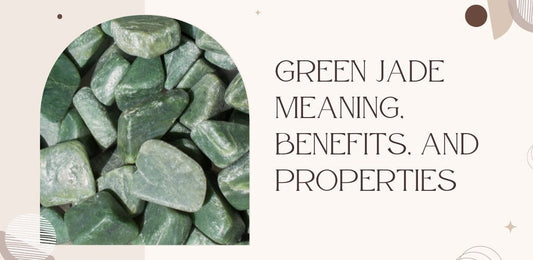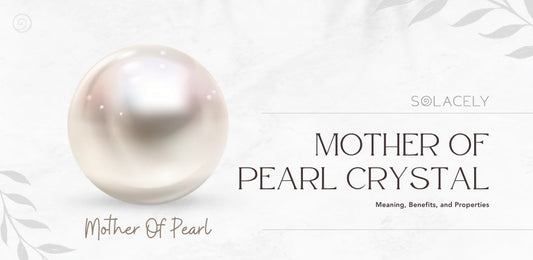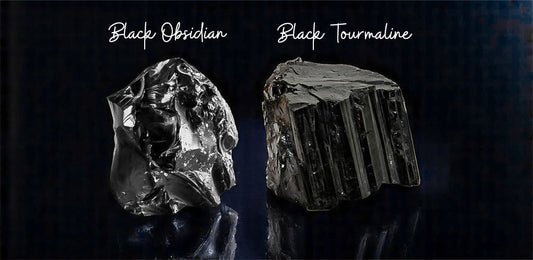What is Rune Symbols?
Rune symbols are an ancient form of writing with deep meanings. They have been used in various cultural and magical practices. Understanding their origins and evolution is key to appreciating their complexities.
Origins of Rune Symbols
Rune symbols have a mystical background steeped in Norse mythology. According to tradition, the runes were not created but are eternal, pre-existent forces discovered by Odin. In an intense ritual of self-sacrifice, Odin hung himself from Yggdrasil, the world tree, fasted for nine days, and peered into the waters of the Well of Urd, finally gaining the knowledge of runes. This profound origin story underscores the sacred nature of runes and their perceived power to shape destiny, as the Norns, the Norse beings of fate, used runes to carve the fates of all beings.
The historical inception of rune symbols, as we know them, is traced back to the Elder Futhark, the oldest form of the runic alphabet. The earliest known sequence of the futhark is found on the Kylver stone from Gotland, Sweden, dating to around 400 CE. This indicates the runes' use as a writing system with the potential for magical connotations.
Evolution of the Runic Alphabet
The runic alphabet has undergone several transformations throughout history. The transmission of writing from southern to northern Europe is speculated to have occurred through Germanic warbands encountering Italic script during their campaigns. This interaction likely influenced the development of the runic script, imbuing it with the power and mystery associated with Odin and his warriors.
As time progressed, variations of the original Elder Futhark emerged, adapting to the linguistic changes and needs of different Germanic populations. The Younger Futhark, which evolved from the Elder Futhark, is one such example that simplified the alphabet to 16 runes, reflecting changes in the spoken language.
The evolution of the runic alphabet is a linguistic journey and a cultural one, reflecting the values, beliefs, and practices of the societies that used them. Today, rune symbols retain their allure and are often explored through divination practices and as powerful sigils for various intentions, such as protection, love, and strength. The runes have also found a place in modern culture, from literature to various forms of esotericism, where they continue to evolve and adapt their meanings to contemporary contexts.
Exploring Elder Futhark Runes
The Elder Futhark is the oldest runic alphabet form, consisting of 24 symbols. Each rune is steeped in symbolic meaning and has been used for various purposes, including writing, divination, and magic. Below, we explore the symbolism and meanings of some critical runes within the Elder Futhark.
Fehu: Symbolism and Meanings
The Fehu rune resembles an "F" and represents Livestock, a measure of wealth in ancient times. This rune is associated with:
- Wealth
- Abundance
- Success
- Security
- Fertility
Regarding magical significance, Fehu often refers to prosperity, financial gain, and abundance. It is a positive omen for those seeking rune symbols for success and abundance.
Uruz: Symbolism and Meanings
Uruz, shaped like a "U", symbolises the Bull. It is a powerful rune that embodies:
- Strength
- Tenacity
- Courage
- Untamed Potential
- Freedom
Uruz is often invoked for rune symbols of strength and courage and embracing one's untamed potential. It can guide individuals embarking on new ventures and those seeking the freedom to pursue their paths.
Thurisaz: Symbolism and Meanings
Thurisaz represents a Thorn and resembles a "P". It conveys meanings such as:
- Reaction
- Defence
- Conflict
- Catharsis
- Regeneration
Known for its protective properties, Thurisaz is a rune symbol for protection. It is also associated with overcoming conflicts and can signify a period of regeneration following challenges.
Ansuz: Symbolism and Meanings
Ansuz, which looks like an "A", represents an Estuary and is linked to:
- Communication
- Understanding
- Inspiration
- Wisdom
This rune is often related to rune symbols for communication and can be sought after for guidance in matters requiring clarity and insight. It is also connected to receiving messages and inspiration, possibly from the divine or one's inner self.
Raidho: Symbolism and Meanings
The Raidho rune looks like an "R" and symbolises a Wagon. Its associations include:
- Travel
- Rhythm
- Spontaneity
- Evolution
- Decision-making
Raidho is linked with life's journey and can be reflective of rune symbols for guidance and evolution. It suggests alignment with the universe's rhythms and supports those making important life decisions.
By exploring these Elder Futhark runes, individuals can gain a deeper understanding of the messages and guidance each symbol carries. Whether used for divination with rune symbols or personal reflection, the meanings behind these ancient symbols continue to resonate with many people today.
The Magical Significance of Runes
The mystique of rune symbols extends far beyond their historical use as an alphabet. These ancient characters are imbued with profound meanings and have been a cornerstone of magical practices since their inception.
Odin's Discovery of Runes
The runes were discovered by Odin, the Allfather of the Norse gods, in a self-sacrificial ritual. Odin impaled himself with his spear and hung from the cosmic tree, Yggdrasil, for nine nights, peering into the depths of the Well of Urd. Through this ordeal, he gained the wisdom of the runes and later imparted this knowledge to humanity. This tale from the Hávamál underscores the runes as eternal elements of the cosmos, with each symbol carrying a weight of cosmological significance.
Runes in Norse Mythology
Runes are fundamental in Norse cosmology and were seen as powerful tools wielded by the gods. The Norns, who spun the fates of gods and men, carved these fates into the cosmic tree with runes, according to the Völuspá, an Old Norse poem. This act illustrates the belief in runes' transformative and determinative power, intimately linked with destiny and weaving the world's fabric.
Runic Magic and Divination
Runes were not only a means of communication but also served as potent symbols in magical rites and divination practices. Historical records and runic inscriptions suggest that these symbols were used to cast charms, create magical objects, and foretell future events. Rune casting, a form of divination, involves interpreting the fall of rune stones to gain insight into questions or situations. This tradition reflects the multifaceted use of runes, from protective rune symbols for protection to auguries of rune symbols for success.
The enigmatic nature of runes and their deep association with Norse mythology elevate them beyond mere letters. They are considered sacred tools for understanding the universe and influencing the world through magic. Today, runes continue to captivate those interested in the esoteric and the historical, from Norse rune symbols to their modern interpretations in various cultural contexts.
Practical Use of Runes
Runes have been used throughout history, from writing and communication to mystical and divinatory practices. Today, individuals continue to explore the practical applications of rune symbols, often drawing on ancient traditions for guidance and insight.
Creating and Casting Runes
Creating your own set of runes can be a deeply personal and empowering process. According to "Runes for Beginners" by Wayne Brekke, the empowerment and consecration of runes is crucial in preparing them for use. To create runes, one can carve or paint the symbols onto small stones, pieces of wood, or any material that resonates with the individual. Each rune symbol should be carefully crafted with intention and respect for its historical significance.
Various methods can be employed when casting runes. A common approach is to draw runes from a bag and lay them out in specific patterns or spreads, each of which can provide different perspectives and insights. Casting runes is not only a tool for divination but also a means for self-discovery and transformation.
Reading and Interpreting Runes
The art of reading runes requires understanding their deep meanings and the context in which they appear. Divination with rune symbols is a practice that calls for intuition and a connection with the spiritual or metaphysical aspects of the runes. Each rune symbol has its unique energy and message, which can offer guidance on various aspects of life, from prosperity and wisdom to love and courage.
Interpreting runes is not a one-size-fits-all process; it can be highly individualistic, with the reader's personal experiences and perspectives shaping the interpretation.
Whether used for writing, as seen in the ancient rune symbols, or for mystical purposes, like seeking protection or luck, runes continue to captivate those interested in the rich heritage of the Norse tradition. By creating and casting their runes and learning to read and interpret the symbols, individuals can tap into the ancient wisdom that runes embody, finding relevance and meaning in today's world.
Modern Interpretations of Runes
Runes have transcended their ancient origins to become a multifaceted part of modern culture, esoteric practices, and creative works. Their enigmatic symbols and deep meanings continue to fascinate and influence people worldwide.
Runes in Modern Culture
In today's society, runes have seen a resurgence, especially within New Age esotericism and various neo-pagan traditions. These symbols are often seen as tools for divination, personal growth, and connecting with the spiritual realm. Runes are revered for their historical significance and their perceived magical properties, making them popular in practices such as meditation and ritual work. The continued interest in runes is evident in the wide range of books available, such as "Runes for Beginners: The Comprehensive Guide to the Reading and Meaning of Elder Futhark Runes," which delves into the modern application of these ancient symbols.
Runes in Esotericism and Paganism
Within esoteric and pagan circles, the runic alphabet, particularly the Elder Futhark, is often used for magical purposes. Practitioners may create talismans or amulets inscribed with runes to harness their energies for protection, love, strength, and more. The use of runes in modern paganism is not limited to divination; they can also serve as focal points during meditation and are incorporated into rituals for various intentions, including healing, luck, and prosperity.
Runes in Literature and Popular Culture
Runes have significantly impacted literature and popular culture, particularly within the fantasy genre. Their mysterious allure and historical background make them a compelling element in storytelling, where they are often depicted as ancient and powerful symbols. Runes have appeared in various forms, from the inscriptions on magical artifacts to the basis of entire writing systems within fictional worlds. Moreover, the popularity of runes extends to video games and movies, where they are frequently used to add a layer of mysticism and authenticity to fictional settings.
The modern fascination with runes underscores their enduring appeal as symbols that bridge the gap between the ancient and the contemporary. Whether drawn to runes for their esoteric qualities or simply as a fan of their representation in the arts, it is clear that the meanings and influence of rune symbols continue to evolve and captivate audiences around the globe.
You may also like:
Top 10 Manifestation Symbols and their meaning
Meaning of Viking Rune Symbols
Rune Symbol For Protection
Be a Tarot card reader on our website









